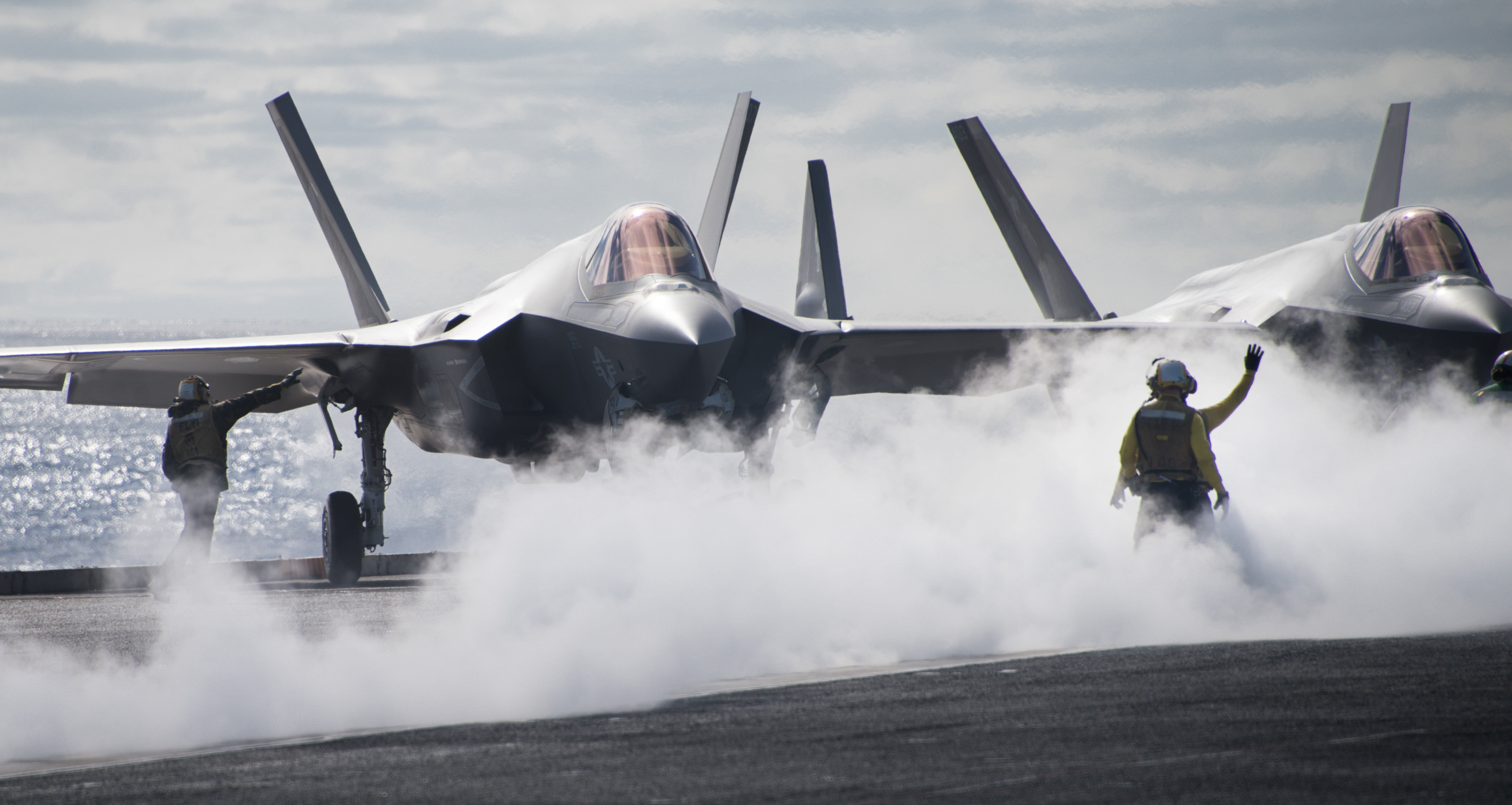In a recent story by Megan Eckstein published by USNI News on February 20, 2019, the author reports on a panel held at the recent Navy exposition in Washington DC.
For the aviation community, the pace of inserting more lethality into the fighter force is already predetermined: the F/A-18 Hornets are gone, and the F-35C Lightning II Joint Strike Fighter is on its way in to supplement the F/A-18E/F Super Hornet as a co-equal component of the fighter jet force.
For Vice Adm. DeWolfe Miller, commander of Naval Air Forces, the new jets are on their way and he has to make sure tactics can keep up to provide the Navy with the most combat power.
“All those tactics, as we bring fifth-gen and fourth-gen together – if you will, we kind of commonly call that Gen 9 air wings that we’re going to be having soon – those tactics, techniques and procedures to be able to maximize lethality within our air wings,” he said during the panel presentation.
After the panel, Miller told USNI News that various recapitalization and upgrade efforts cause various levels of disruption to the fleet, but his job as the type commander is to manage that risk and ensure the combatant commanders have the air wings they need.
“We deal with it across the board: as I go from E-2C to E-2D, as I go from P-3 into P-8, those are fairly natural progressions that really don’t stress the force, but it is new training that’s required.
“More importantly, when I go from EP-3s into a multi-INT Triton – so that one’s going to be, the whole way we train is going to be different, the fact that I’m going from manned to unmanned. But the way the mission’s done, there’s a lot of similarities,” Miller said.
“I’ll use another example, F-35: so again, tactical aviation, but new capabilities. … If we’re assessing how an air wing is performing, maybe those metrics are different when I’m looking at a more capable air wing. Maybe we need to elevate up that as well.”
Learning to embrace the F-35C will require some thought regarding entirely new ways to do missions, Miller acknowledged, but at the most basic level “we need to make sure that we’re doing our due diligence to make sure the capability – as a force generator, as a TYCOM – that the capability, we know how to operate it, we know how to sustain it, we know how to maintain it and we know how to turn it into lethality. And then we provide that to the combatant commanders, who will fight with it.”
The featured photo shows Sailors directing an F-35C Lightning II assigned to the Argonauts of Strike Fighter Squadron (VFA) 147 on the flight deck of Nimitz-class aircraft carrier USS Carl Vinson (CVN 70). (U.S. Navy photo by Mass Communication Specialist 3rd Class Ethan J. Soto/Released)


